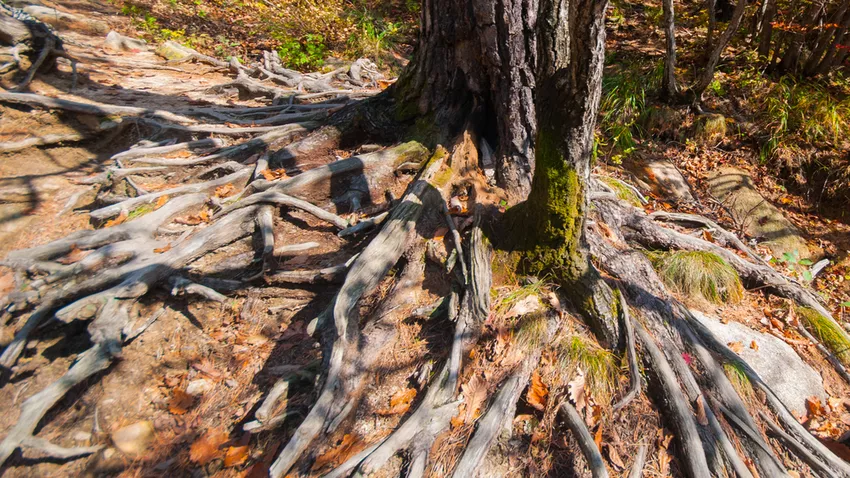- Knowledge of root growth eliminates concerns
- Root barrier prevents wall damage - this is how it works
Planting maple trees on plots of land with limited space needs to be carefully considered. This also applies to the magnificent blood maple, which is a direct descendant of the fast-growing Norway maple (Acer platanoides). This guide takes a close look at root growth and explains possible damage to masonry.
 Red maple grows not only in height but also in width
Red maple grows not only in height but also in width
Knowledge of root growth eliminates concerns
Red maple thrives as heart roots with a pronounced tendency to shallow roots. From this point of view, conflicts with walls are not to be feared, as long as you keep a reasonable distance when planting. However, the legally prescribed border distances of 200 cm on average in most federal states are not sufficient.
Unless you prune your red maple, the Faassens Black variety will reach a width of up to 10 m over the years. Accordingly, most of the root strands will expand horizontally. The columnar blood maple Crimson Sentry is satisfied with significantly less space, the crown and roots of which reach a maximum extension of 4 m.
Root barrier prevents wall damage - this is how it works
With a root barrier, you can effectively prevent wall damage from the outset. Root barriers are made of sturdy plastic, do not rot and are impenetrable for tree roots. How to use the barrier correctly:
- Dig a 60 cm deep planting pit with the diameter of the expected crown extension
- Knock out the edge of the pit with the root barrier
- Connect the overlapping ends with an aluminum rail
- Plant the red maple in the middle while maintaining the previous planting depth
- Drive support stakes into the ground and connect to the trunk
- Firm and water the soil
In order for the root barrier to fulfill its function perfectly, it should protrude about 10 cm from the ground. Otherwise, the powerful root strands could overcome the barrier. With an underplanting of ground cover, you quickly hide the black plastic from the observer's view. Alternatively, spread a layer of bark mulch on top of the root disc.
tips
With his book "The Secret Life of Trees", Eifel forester Peter Wohlleben opened our eyes to the importance of roots. The majestic forest dwellers use their roots to communicate, exchange information and warn each other of pests or diseases. It is therefore taboo to cut healthy roots when planting.